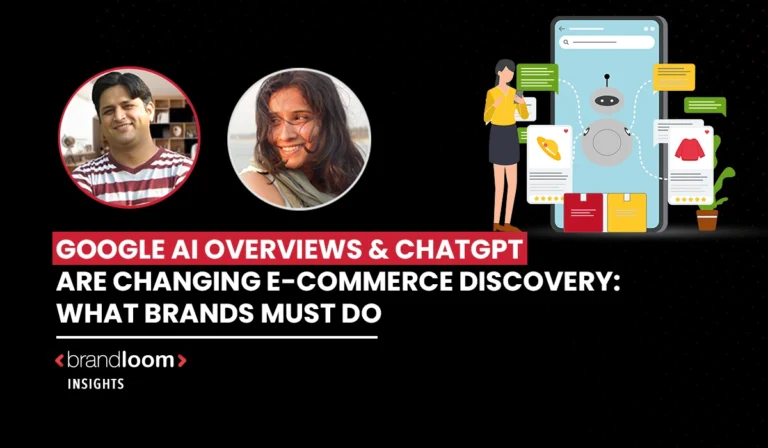Marketing in any form hinges on one pivotal factor- the target audience. Who you are marketing to, determines what your marketing strategy will be. But how do you know or discover who your target audience is? In the age of the internet, how can marketers define their target audience?
A smart marketer knows that no product appeals to everyone. Every brand has a specific audience in mind for selling its products and crafts its marketing strategy according. So if you want to engage with your target to mutual benefit, you must know who they exactly are. So, let’s take the plunge- how do you define your target audience?
Is your customer B2B or B2C?
This is the first question that you should consider; because how you speak to a B2B partner will be completely different than how you communicate with a B2C customer. Appealing to a B2B customer is much harder because, in B2B relationships, the customer is often a company. It is complicated to profile a company, whereas profiling a person is more straightforward. B2B marketing is a specialised area, and marketers must understand that convincing a B2B partner requires negotiating over a lot of specifications about turnover, supply chain, management issues, competitive production and pricing parameters.
However, when it comes to the end user, it is a different ball game altogether. Here are some techniques marketers can adapt to define their target customer group.
1 Create a profile of your end customer
Every product is created, keeping in mind a specific demographic. Create a profile of your target audience first. Here are a few questions you should ask yourself while you are creating that profile:
- What is the age of your target customer?
- Do they belong to any particular gender?
- What is the income bracket you are targeting?
- Where does your customer live?
- Do they belong to any particular religion/social group/orientation?
The questions may feel perfunctory, and the answers may seem obvious, but it is always better to answer them clearly. You will see that once you have clarity on these answers, you can narrow down your target considerably.
2 Conduct market surveys
No product should be launched or marketed without a solid market survey to back it. This can be done in various ways- you can go door to door, or conduct polls online and on social media. If you have an existing customer base, you can use them for a sample survey. For example, if you have an email list or followers on your Facebook page, you can conduct a survey and urge them to participate.
3 Ask the right questions
Data is powerful- but only if it is useful. When you conduct market research, make sure that you are asking the questions. For example, if a restaurant asks its customers what their favourite flavour- chocolate or strawberry is, it can gauge what the majority of their customers like, and may use that information to add a specific flavoured dessert to their menu. However, if the question is “why do you think chocolate is better than strawberry?” the respondents will provide unnecessary details that will serve no purpose. So make sure to craft your questions carefully.
4 Use social media marketing tools
- Facebook: Facebook Ad Manager is an excellent tool for understanding your target audience. It is regarded as one of the best online sources for finding useful consumer data. The algorithm is powerful, and has its target audiences narrowed down very effectively. You can also use Facebook Insights to gain powerful data insights about your audience. You can check what kind of demographic is the most active for your product, and tweak your marketing strategy accordingly.
- Twitter: Twitter Followers Dashboard is another great tool that yields valuable data insights into your target audience. The Dashboard shows what are the topics and other Twitter handles/profiles your followers have in common.
- Instagram: Instagram has emerged as a powerful marketing platform, especially among young people. Instagram Analytics is a tool that shows you information on the posts and stories you create. While the data is easy to understand, it cannot be exported to external software and has other opaque areas that make marketers’ job difficult.
Since Instagram killed its old API, it has become difficult for marketers to mine useful data from these particular channels. As a result, many marketers are now reliant on strong third-party analytics apps and tools that follow the site’s privacy policies. There are many other such tools available in the market. Do your research on them, and if possible, try them out. See what works for you best.
5 Use Google Insights and check what content is working best
Google Insights is another powerful tool that helps you understand your customer better and enables you to know what kind of content is working. Where are maximum clicks coming from? What time of the day do most people look at your website? Are there certain days when your website sees more traffic? Are there certain topics that are generating more buzz? What content is not seeing many pageviews? These are important factors which should be considered while defining your target audience.
6 Pay attention to comments and use social listening tools
The good thing about the internet is that here, you can get instant customer feedback. This is a great source for data that will help you understand your audience and define it. Listen to what they are saying, if they are listing any suggestions, demanding any edits or recommending something.
There are many great social media listening tools that will give you an idea of what customers are talking about. Look out for mentions, viral content and tags used on social media. If you have your finger on the market’s pulse, you will know who to talk to and how to engage with them.
For example, take the example of Max Mara which relaunched the coat that US House Speaker Nancy Pelosi wore to speak with the press after a meeting with US president Donald Trump. Thousands of netizens praised it, and even celebrities started asking about it. The house relaunched the coat, and it immediately saw the piece fly off the shelves.
7 Watch the competition
Of course, you MUST know your competition if you want to know who you are talking to. Understand that even though you and your competition may have a demography overlap, you will have to create a niche where your product will appeal more. Hence, watch your competition closely and identify which the customers they are engaging with. You can try to appeal to the same via target marketing. However, if you want to have the edge over them, you can identify specific demand gaps in your competition and tap into that lacuna to appeal to the customers.
A good example is a rivalry between Mercedes and Jaguar. Both target similar customers within similar income brackets, and they both keep studying each other. The result is a slew of competitive advertisements and marketing campaigns that actively try to win over their customers, which see them both go neck to neck in customer engagement.
8 Make room for changing target demographic
Know that your audience is not static. People change, and as customers grow older, their aspirations and needs change as well. Consider this- young women are more likely to experiment with bright lipsticks. However, as they age, they are more likely to go for more muted shades. So, the woman who is your target audience today may not remain the audience for the same bright lipstick ten years from now. Instead, you will have a new set of 20 somethings as your customers, and you may have to change the way you speak to you to a young woman today than what you were used to a decade ago.
9 Ask for feedback regularly
The market is intensely competitive with new products being launched every day, and your customer base may shift to another product that they feel is communicating better. Moreover, technology is updating rapidly and is offering new ways of engaging with people. In a changing world, you MUST know what your customers are demanding and how their needs are changing.
The best way to do this is to ask for regular feedback. For example, you can include feedback questions in your emails for your audience. You can hold social media polls and can conduct yearly surveys. If you don’t keep yourself updated on what your audience’s demands, you will soon lose your ground.
In Conclusion
Be vigilant, and use data insights judiciously if you want to define your target audience. Marketers have a plethora of tools at their disposal today- so if they can use them smartly, they will know who to talk to.
Knowing your target audience is the foundation of a good marketing strategy. So, go ahead and start listening.






